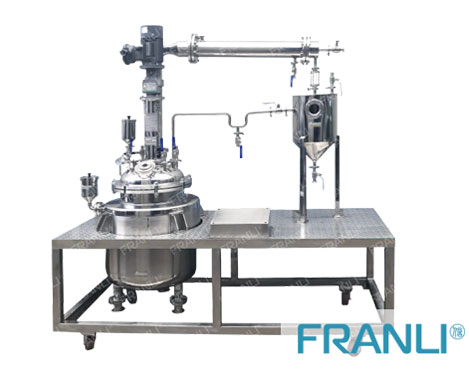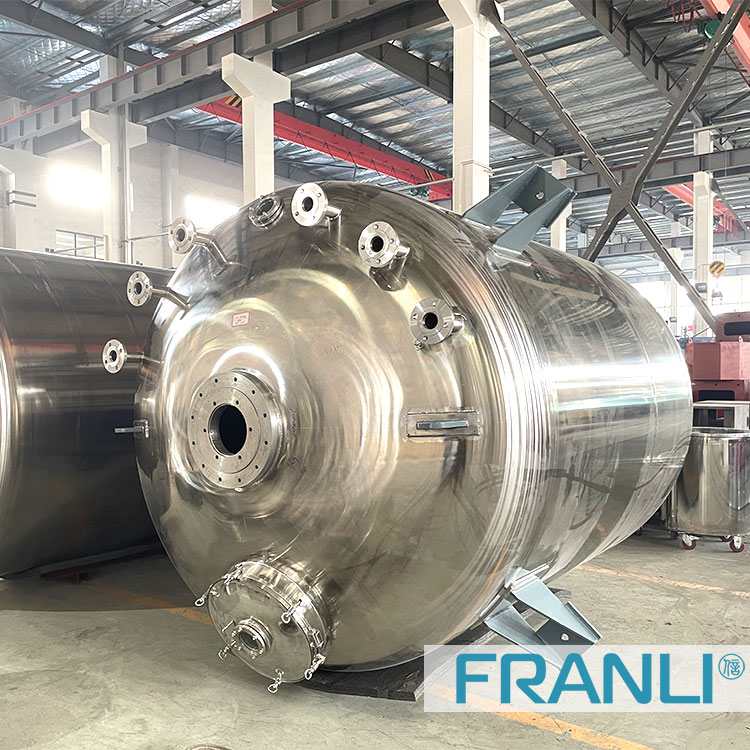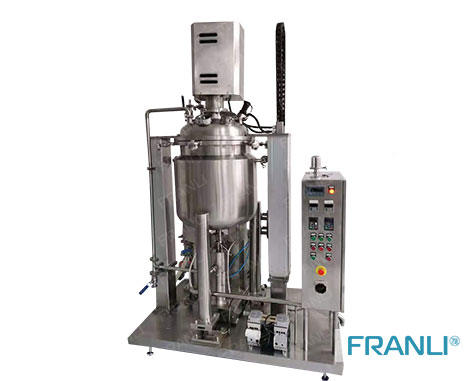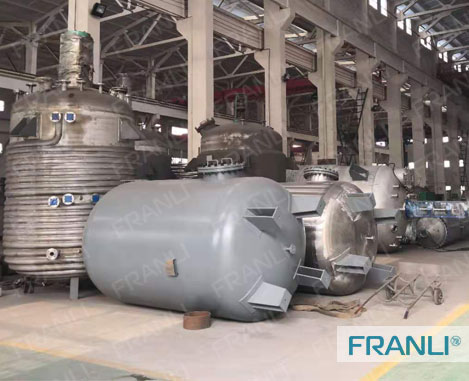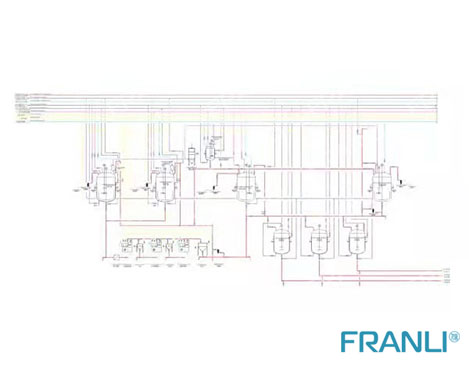Laboratory Reactor
FRANLI laboratory reactor is composed of a pot body, pot cover, stirrer, heating jacket, support and transmission device, shaft seal device, etc. The pot body, pot cover, stirrer, shaft seal, etc. are all made of 1Cr18Ni9Ti stainless steel. A laboratory reactor is mainly suitable for hydrolysis, neutralization crystallization, distillation, evaporation, storage, and other production links in medicine, bioengineering, fine chemical industry, chemical synthesis, food, and other industries.
Advantages of laboratory reactor:
- High quality
- Easy to use
- Provide customized services according to customer material characteristics
Application

Coating

Cosmetic

Battery

Graphite

Agrochemistry

Adhesives
Hot sale aboratory reactor

• Easy installation of the bead mill machine: The best features of this bead mill machine are: You can easily install it wherever you want. This task is so simple, and effortless. And due to this feature, it is extremely popular among other equipment. You can find the bead mill working principle so effective, and you can perform all the mixing tasks effectively without adding so much effort. As this machine is very bulky and cheap, it needs only a few minutes to install. In this way, you can reduce the labor charges and other exhausting jobs. So, you can stay worry-free about how to install this machine? As the company has made this task easier for you.
• Efficient work performance of this bead mill machine: As we know, the bead mill working principle has been created in such a way that you can achieve higher and efficient work performance on this bead mill machine. If you are looking for quality and stable work, these bead mill machines are the best option to get a consistent mixture of any particular material. You can use this bead mill for paint, ink, and coating industries. And, it is a comfortable and easy method to perform all the mixing and dispersing activities without wasting so much time. So, here bead mill working process is so necessary to obtain the desired results for the company.
• Contains grinding media of 2-3 mm size: It is the necessary feature of the bead mill working process as it includes the grinding media. In this area, grinding and other dispersing activities take place that they turn into a fine mixture. You can use a bead mill for paint, ink, and coating industries, where mixing works have been done regularly. It contains grinding media of 2-3 mm size that is enough to transform all the material to a smooth and fine paste. For this purpose, bead mill manufacturers have added advanced technology to this machine to provide consistent and quality work performances for the company. In this way, you can get a higher productivity ratio. And you can reach the peak of the higher conversion rate. Thus, these bead mill machines are ideal for fabrication companies to get their desired goals with full efficacy.
• Easy operation of the bead mill machine: It is a great feature of this SMP Agitator bead mill machine as bead mill manufacturers create this bead mill machine with advanced technology. And, with this quality, the operation of this sand grinding mill is extremely comfortable. You do not need to call any professional to do the same, and you can do it yourself without adding so much effort. So, it is another best feature to consider about this bead mill machine.
• Easy to clean the bead mill machine: This sand grinding mill is remarkably best for the fabrication companies to enhance the overall growth and production. As we know, while we use any bead mill machine, we need to clean it so that we can get hygienic work performance. For this purpose, companies manufacture this bead mill machine in a way that you can clean it comfortably without making yourself exhausted. You can go through the bead mill pdf and other relative documents that provide you the guidelines of clean this bead mill machine.
• Easy to maintain the bead mill machine: Maintaining is also a matter of concern as it requires your time and money. For this purpose, you can check the bead mill pdf and manual provided by the company at the time of purchase. You can either contact the company or read the manual carefully to know all the information about the bead mill machine. And, you can find this process is extremely simple to perform. So, you can get this bead mill machine without spending so many amounts on it. And, in this way you can concentrate on the work performance of the company.

Also, you can use SMP Agitator bead mill in paint industry, ink, and other coating work companies to make all the mixing and grinding activities easier and more manageable. To get this bead mill machine, you search for those companies that deal in these machines and other equipment. For this purpose, you can get a quote or related other information about the bead mill machine.
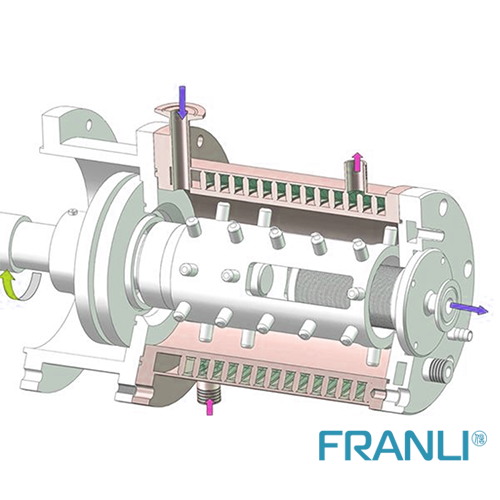
Hydraulic TRH type
Hydraulic Three Roll Mill, which is a full hydraulic auto-controlling system equipment. 1- Cooling system: an individual cooling system for each roller. 2- hydraulic control: hydraulic control pressure blades, roller gaps, etc. 3- Optional installation:PLC system with SIEMENS touching screen, FRANLI engineer set formulas of grinding according to different viscosity materials.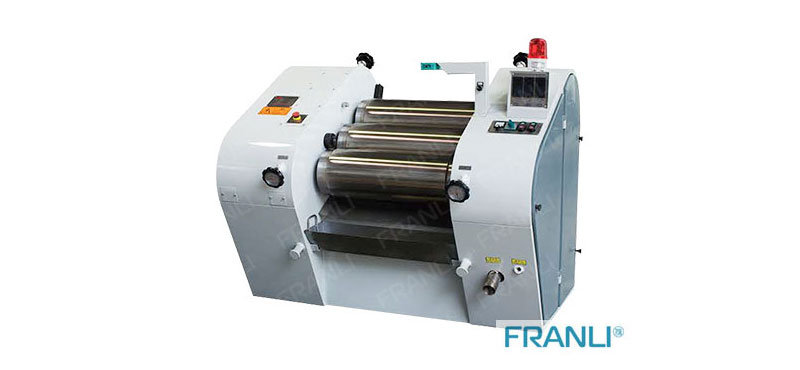 Lab TRL Type
Lab three roll mill with PLC Touching Screen,which is widely used in medicine, ink, cosmetics, and electronics industries. Small size, digital number auto-operation. Which smarter, safer, and faster. Which is customized for different material requirements.
Lab TRL Type
Lab three roll mill with PLC Touching Screen,which is widely used in medicine, ink, cosmetics, and electronics industries. Small size, digital number auto-operation. Which smarter, safer, and faster. Which is customized for different material requirements.
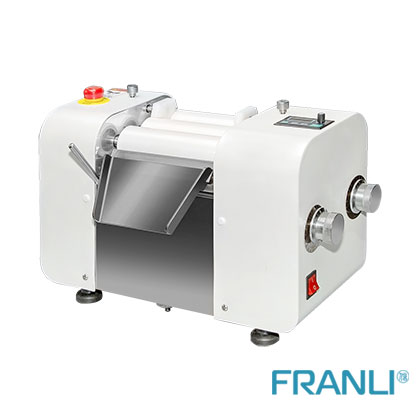
Vertical type for Grinding Powder
Also, we have a vertical three-roll mill for grinding powder and chocolate. We have 3 rollers, 4 rollers, and even 5 rollers, which are all vertical types. We export to the soap industry and chocolate companies.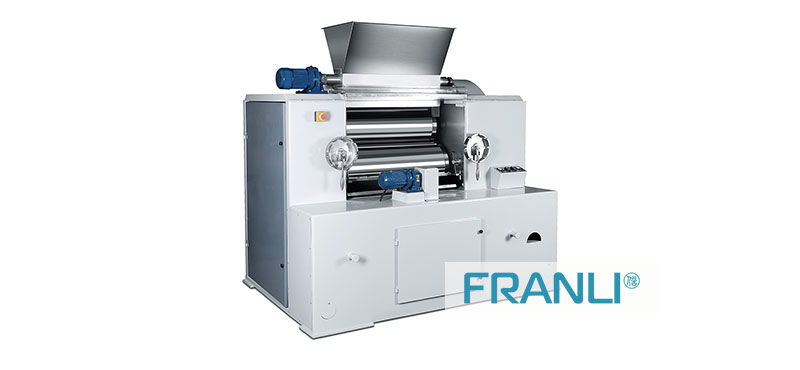
Heating type
Franli also offers a heating hydraulic three roll mill for rubber, EVA, PVS, and color masterbatch. As this type of machine grinds high viscosity material, we specially design the gear quality. This type is been Heated by oil or steam. Franli three roll mill machine are full automatic PLC controlling, hydraulic system, stable operation, reliable quality. We choose the international brand parts. Standrad parts, ABB VFD, Siemens Motor, SKF or NSK bearings, SEW or Nord reducer. A roller is 45-55mm thickness of metal, cast steel. You can widely choose ceramic, alloy, granite rollers for your material. If you have several formulas of material, we can set up formulas in the PLC system, your workers only need to choose numbers on touching the screen, don’t need to waste time to adjust the rollers’ gap or the pressure of the blade.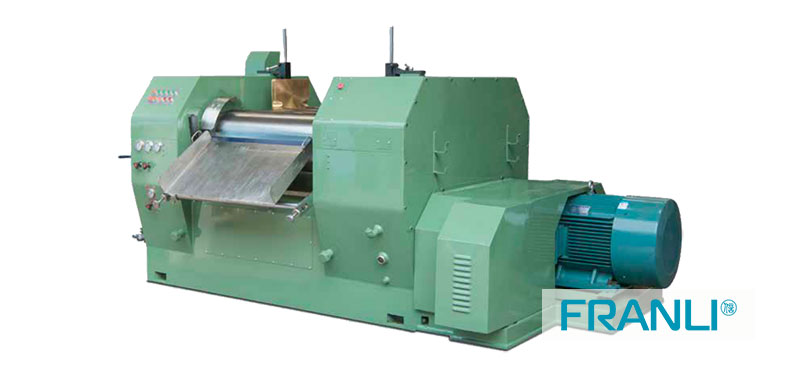 About the feeding system, we have several kinds for different viscosity of the material. Such as a feeding pressure machine, also called an extruder machine. And feeding system is installed on the top with a single reducer motor. While if your material is a crazy high viscosity, and small batch production, we suggest that it’s better to feed material into rollers by manual scrapper.
Our package is a standard export wooden case, and our factory is close by shanghai port, fast delivery, and cheaper shipment. Welcome to connect with us. we will choose a suitable three roll mill for your material. Of course, you are welcomed to send us your material for the first trial before offering an order.
About the feeding system, we have several kinds for different viscosity of the material. Such as a feeding pressure machine, also called an extruder machine. And feeding system is installed on the top with a single reducer motor. While if your material is a crazy high viscosity, and small batch production, we suggest that it’s better to feed material into rollers by manual scrapper.
Our package is a standard export wooden case, and our factory is close by shanghai port, fast delivery, and cheaper shipment. Welcome to connect with us. we will choose a suitable three roll mill for your material. Of course, you are welcomed to send us your material for the first trial before offering an order.
Related production lines
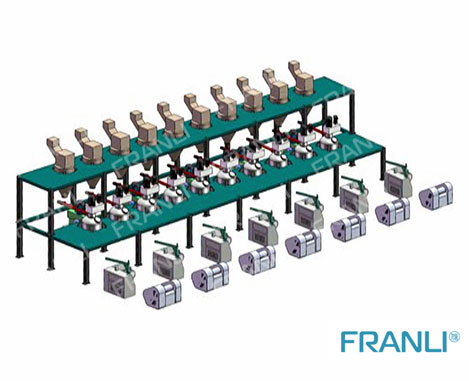
Offset Ink machine line
FRANLI is specialized in offset ink full line production for 20+ years. Helped customer save the cost, save the man power, also save the space.

Offset Ink machine line
FRANLI is specialized in offset ink full line production for 20+ years. Helped customer save the cost, save the man power, also save the space.

Offset Ink machine line
FRANLI is specialized in offset ink full line production for 20+ years. Helped customer save the cost, save the man power, also save the space.

Offset Ink machine line
FRANLI is specialized in offset ink full line production for 20+ years. Helped customer save the cost, save the man power, also save the space.
Downloads

Laboratory Reactor
Guidelines For laboratory reactor
Because laboratory reactor users have different production processes and laboratory reactor operating conditions, they have different requirements for laboratory reactor lid process openings, stirring types, support types, and packing seals. They can contact FRANLI to design various types of reactors independently.
The pot body and the pot cover of the laboratory reactor are connected by flange sealing. There is a discharge hole in the lower part of the pot body. There is a stirrer in the pot. Tube hole. The heating jacket is provided with an inlet and outlet oil temperature measurement, venting steam valve, electric heating rod, and other connecting holes.
The structure and performance of laboratory reactor:
The laboratory reactor equipment is mainly composed of three parts: tank, jacket, and stirring system.
Materials of laboratory reactor:
The parts in contact with the material are made of high-quality stainless steel and special glass such as 304 or 316L, which conform to GMP standards.
laboratory reactor heating and cooling:
The heating methods of laboratory reactor can choose steam, electric heating, and heat transfer oil to meet the process needs of different working environments such as acid resistance, alkali resistance, high-temperature resistance, abrasion resistance, and corrosion resistance.
surface treatment of laboratory reactor:
The inner surface of the laboratory reactor is mirror-polished to ensure no hygienic dead corners. The fully enclosed design ensures that the material is always in a sterile state. The outer surface of the laboratory reactor can be optionally sandblasted, frosted, and cold-rolled with primary color matt treatment.
The detection method of laboratory reactor
Generally, we use a thickness gauge to measure the thickness of the titanium reactor layer, and the measurement value should be between 0.8 and 2.0mm. The more uniform the thickness of the laboratory reactor porcelain layer, the better. There is a wrong understanding to be corrected here. Many users think that the thicker the reactor layer of the laboratory reactor, the better.
The thicker the reactor layer of the laboratory reactor, the lower its ability to withstand sudden temperature changes, and the sudden change of temperature difference leads to an increase in the probability of the glass-lined layer bursting. Place a standard plate on the laboratory reactor, and use a feeler gauge to measure the gap between the plate and the flange, the smaller the better.
The deformation of the manhole flange of the laboratory reactor is mainly manifested by the unevenness of the flange surface, especially at present, some manufacturing companies still use a large number of punched manholes. This manhole has poor high-temperature strength, easy deformation, and is difficult to control. Especially the laboratory reactor equipment with many firing times has a large deformation of the manhole.
Classification of laboratory reactors
1. Hydrothermal synthesis reactors, such reactors are generally small in volume, generally below 200m. The equipment is placed in a homogeneous reactor or a temperature control box for high-pressure and high-temperature reactions.
2. Hydrogenation reactor, this type of equipment is mainly a reaction vessel for hydrogenation or hydrogenation reaction. The difference from ordinary reactors is that due to the explosiveness of hydrogen, this type of equipment needs to be equipped with a hydrogen explosion-proof device.
3. High-pressure reactors, which are the most widely used in petrochemical, polymerization, and catalytic reactions. To meet the needs of the reaction, the pressure-bearing aspects of the reactor were especially considered, and the pressure-bearing of the equipment was increased. ability.
4. Rare metal reactors. The difference between this type of reactor and other equipment is the difference in materials. Generally speaking, materials such as titanium (titanium alloy), zirconium, nickel, and other materials are called rare metal reactors in the manufacture of reactors. Compared with stainless steel, the biggest advantage of the material is its strong corrosion resistance.
Related production lines

Offset Ink machine line
FRANLI is specialized in offset ink full line production for 20+ years. Helped customer save the cost, save the man power, also save the space.
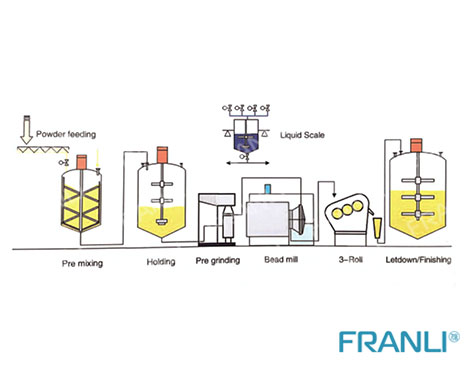
Offset Ink, UV Ink machine line
The FRANLI engineering company, offer the full set of UV INK Production Line, we can make the full drawing according with your factory size, formulas, weather and safety system.
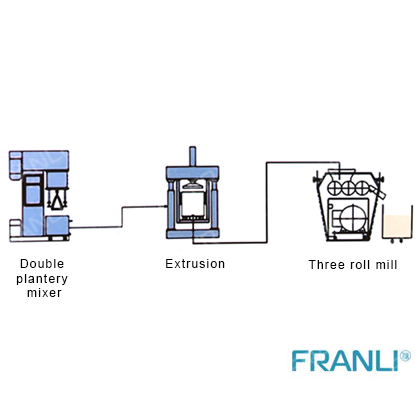
PCB INK Machine line
FRANLI supplies all equipments for the production of PCB inks, from the powder feeding station to the filling part.
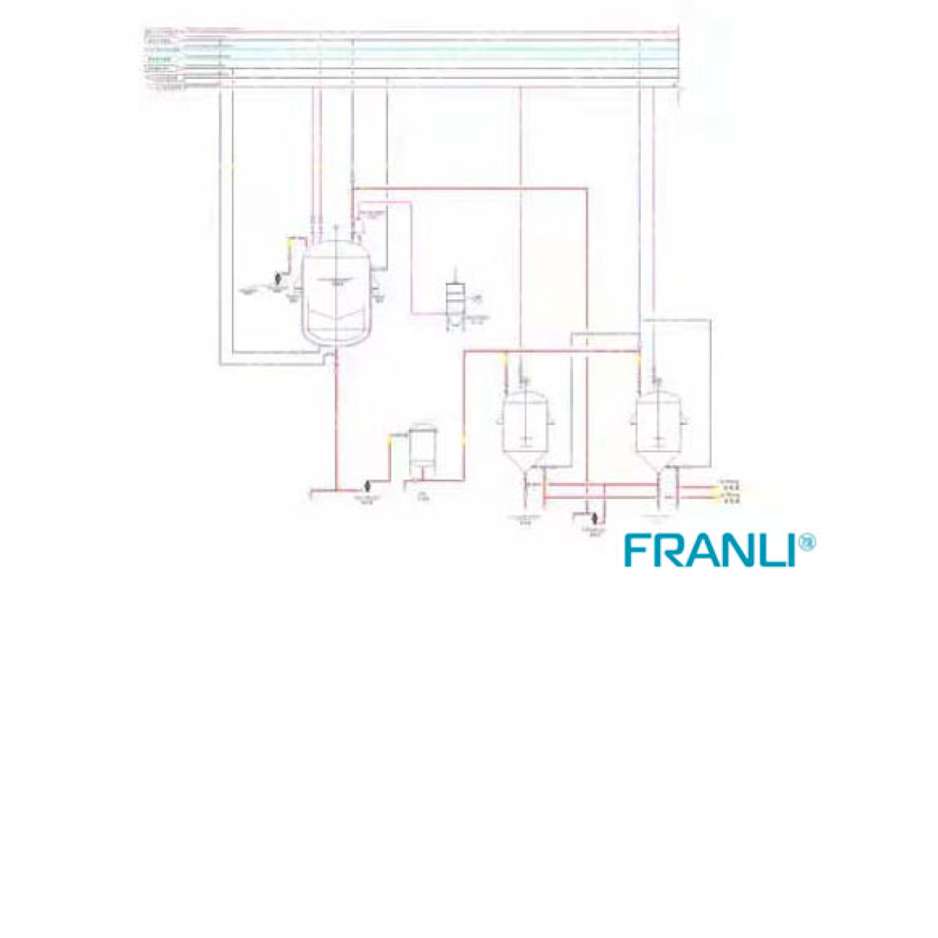
EW-pesticide line
The EW production line mainly mixes raw materials, solvents, and emulsifiers through a reactor (oil-based).
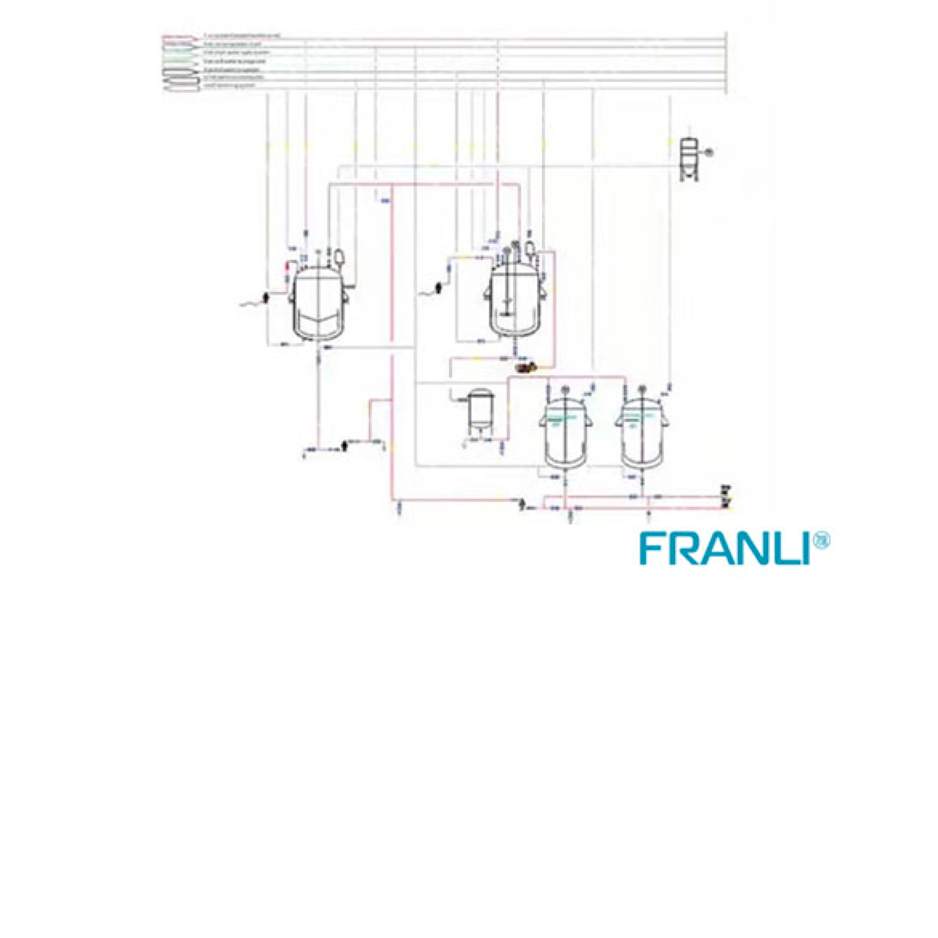
SL_EC pesticide line
The EC production line is mainly composed of an agitator mixer, bag filter, filling machine, etc.
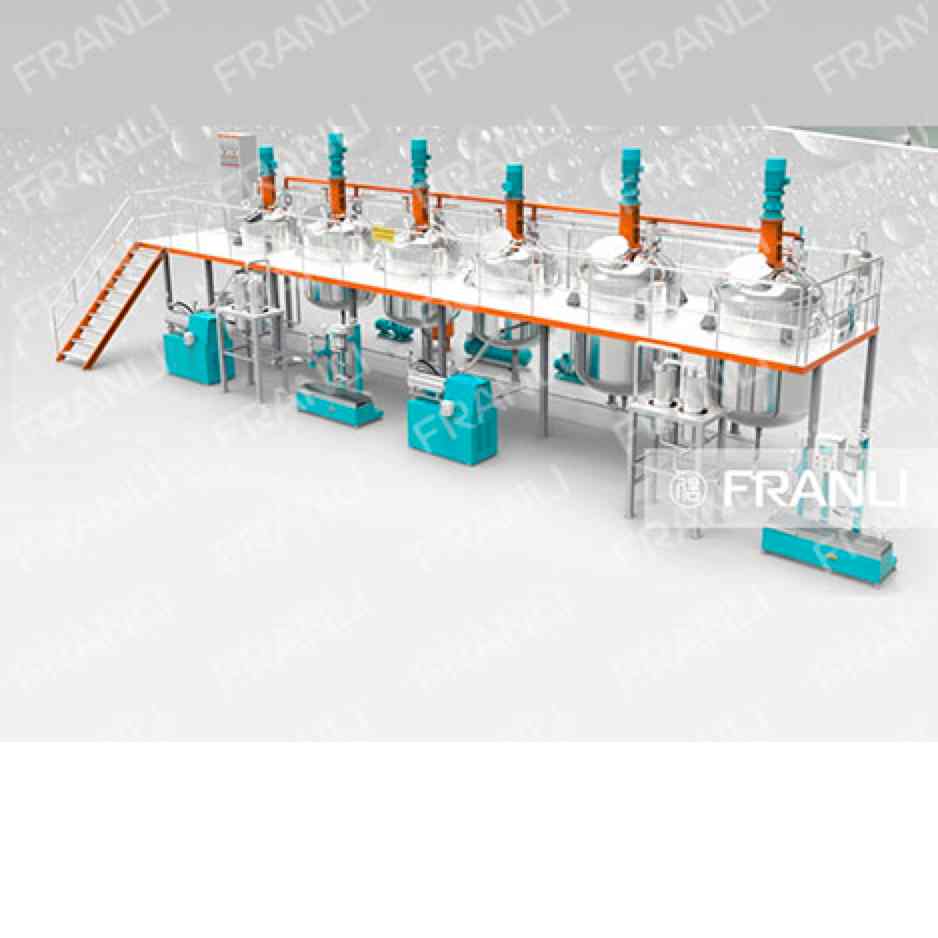
Automotive Paint machine line
The automotive paint machine line is mainly for the production and grinding of automotive paint, Automotive paint has many layers, such as Primer/electrophoretic layer, Medium coat, Colored coat, and Clearcoat.
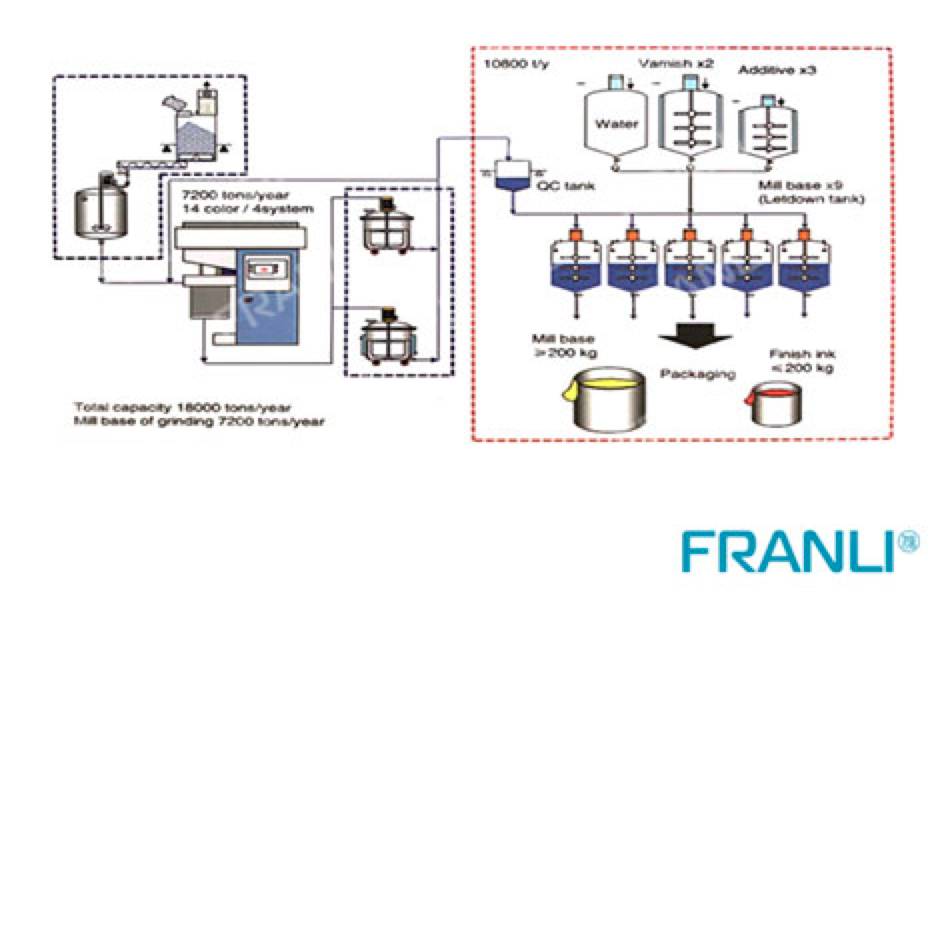
Digital Ink machine line
Franli has professional experience for digital ink machine line, we offered hundreds customers to expand production, or build up new project.
